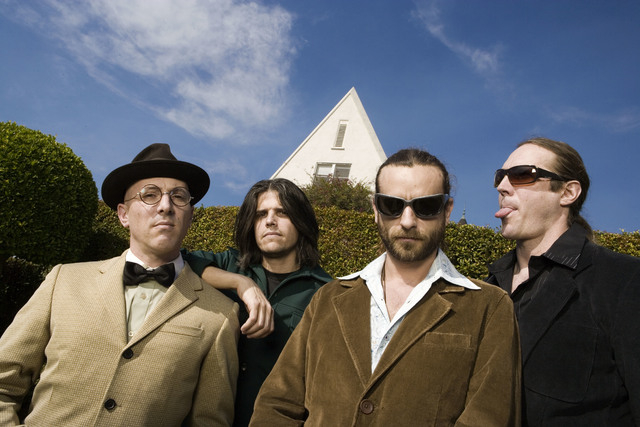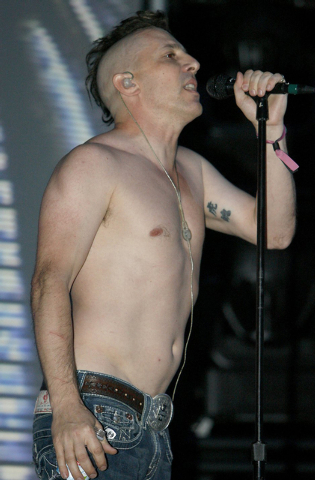Influences on Tool are numerous, open to innumerable interpretations
There are no answers, just questions that begat more questions.
This is one of the few inviolable truths when navigating the prog rock legerdemain of Tool, where little is at it initially seems.
The band’s repertoire, steeped in Far Eastern philosophy and King Crimson records, isn’t obtuse as much as it is open to innumerable interpretations.
Much of this has to do with the fact that the band has so many nonmusical influences present in its catalog that it demands some serious required reading and attention to other artistic media to begin to grasp where these dudes are coming from.
Even then, it’s hardly a firm grip.
Nevertheless, with Tool performing in town on Saturday, we thought we’d take a look at a trio of the figures who cast the longest shadow over the band’s discography:
Bill Hicks
Bill Hicks used comedy as a cattle prod to zap audiences toward his idea of enlightenment, which consisted of throwing off the yoke of political, religious and artistic group-think.
He was fiercely funny, a combative humanist who believed in a collective consciousness that unites us all but which we often fail to get in touch with.
All these ideals inform the music of Tool, who were Hicks fans.
The late comedian once introduced the band at a gig in L.A., and after he died of pancreatic cancer in 1994, Tool paid tribute to Hicks with a portrait of him in the liner notes of its 1996 sophomore record, “Aenima.”
They also sample Hicks on that album’s 10-minute aural psychedelic “Third Eye.”
“There’s no such thing as death, life is only a dream and we’re just an imagination of ourselves,” Hicks says over softly played hand drums and a guitar drone that lulls the senses like a hypnotist’s swinging pocket watch.
True to his words, Hicks lives on, at least in song.
Alex Grey
Alex Grey’s transcendental, extrasensory art seems like direct transmissions from the pineal gland, that tiny structure embedded in the center of the brain that regulates sleep patterns and produces DMT, the neurochemical secretion responsible for our dreams.
Early in his career, Grey spent five years at Harvard Medical School, studying human anatomy via cadavers he prepped for dissection. This background manifests prominently in Grey’s paintings, especially his renowned “Sacred Mirrors” series, which explores the connections of body, mind and spirit in the form of luminous, lysergic depictions of various layers of the human body.
Tool collaborated with Grey on the artwork for its third record, 2001’s “Lateralus,” and his cosmic, hallucinogenic imagery — think lots of fire and pulsating eyes — are a staple of the band’s immersive, pupil-dilating live presentation.
But Grey’s works are more than just a visual component to the band’s music: They represent a shared pursuit of a higher consciousness, two different routes to the same destination.
Bob Frissell
This New Age author was invited to speak to a gathering of Tool fans here in Las Vegas in 2003, and for good reason: One of the band’s best songs, “Forty-Six &2,” seems to have been inspired by themes contained within his 1994 tome “Nothing in This Book Is True, But It’s Exactly How Things Are.”
Bob Frissell argues that humans are evolving to a new state of consciousness where they will possess 46 and two chromosomes as opposed to 44 and two, hence the title of the song (at least in theory) and lyrics that elude to such a transformation (“I wanna feel the change consume me / Feel the outside turning in / I wanna feel the metamorphosis and /Cleansing I’ve endured within”).
One concept Frissell explores is that of sacred geometry, which he argues is the basis of the universe in that everything is formed of the same geometric patterns repeated infinitely.
The symbol of sacred geometry, a geometric figure consisting of multiple overlapping circles called “The Flower of Life,” has been incorporated into Tool artwork.
There are mathematical underpinnings in a number of Tool songs — the time signatures in “Lateralus,” for instance, correspond with the Fibonacci sequence — which seems like a means of orchestrating the chaos contained therein.
Nevertheless, in a 2001 interview with Penthouse magazine, Tool drummer Danny Carey explains the futility of attempting to fully comprehend it all — what truly matters is the attempt itself, not the end result.
Besides, when it comes to the Tool mythos, there is no end anyway.
“We’re dealing with the chaos of life, and we’re rubbing it down,” Carey said. “The deeper you rub, the more patterns you can see until you realize that it’s really an organized chaos. There isn’t really ever any chance to understand it all, but we’re here to keep rubbing.”
Contact reporter Jason Bracelin at jbracelin@reviewjournal.com or 702-383-0476. Follow on Twitter @JasonBracelin.
Preview
Tool
8 p.m. Saturday
The Axis at Planet Hollywood Resort, 3667 Las Vegas Blvd. South
$85 (800-745-3000)















